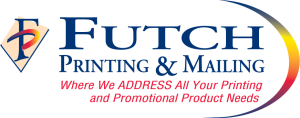 In fast-moving and uncertain situations, communication can be a challenge.
In fast-moving and uncertain situations, communication can be a challenge.
While you may have been temporarily stalled by the dramatic changes of the last weeks and months, now is the right time to be proactive in your customer connections. Crisis communication specialists tell us that, in hard times, communicating early and often is crucial.
The decisions you make now are essential for your business to survive today and to thrive later on.
Why Direct Mail is Still a Trustworthy Source
Reports of postal workers testing positive for the novel coronavirus may have raised some concerns that the pathogen could live on letters and packages, potentially exposing people to infection just from opening their mail or packages. But the U.S. Postal Service has assured us that the mail is still safe:
“There is currently no evidence that COVID-19 can spread through the mail,” the postal service said recently, alluding to the disease caused by the virus and citing the U.S. Centers for Disease Control and Prevention and the World Health Organization.
Most businesses are still mailing at this time, but if you have questions about direct mail marketing, you are not alone. It’s important to be ready with answers for your customers, preferably from reliable sources like the Center for Disease Control:
“Although the virus can survive for a short period on some surfaces, it is unlikely to be spread from products or packaging that are shipped over a period of days or weeks at ambient temperatures,” says the CDC. “Currently there is no evidence to support transmission of COVID-19 associated with [mail and packages] and there have not been any cases of COVID-19 in the United States associated with imported goods.”
Because the virus is not spread through the skin, but through the respiratory tracks, any contact with mail or packages is not an immediate danger. Regular hand-washing and proper hygiene are the most important factors for mitigating any risk with envelopes, packages, or really with any contaminated surfaces.
What Kind of Mail Should I Send?
Since people are currently hungry for connection, there is no better time to lean into your marketing efforts. But be sensitive in doing this, and offer messages of hope and relief. Dartmouth professor Paul Argenti offers these tips for communicating during a crisis:
Focus on What is Important to the Customer
For example, Target sent out a note from the CEO to customers, describing enhanced cleaning procedures and additional staffing for order pickup and drive-up services.
Provide Relief When Possible
JetBlue became the first airline to waive change and cancel fees for coronavirus-related concerns. The move went a long way towards reassuring current customers as well as bringing new ones on board. Insurance companies, in contrast, do not consider the coronavirus a valid reason for canceling a flight.
Focus on Empathy Instead of Pushing Sales
Be creative, but keep empathy in mind. Companies should reshape advertising and promotion strategies to be more in line with the current mood of the day.
Watch for Those Silver Linings
While we’re all in unfamiliar territory right now, everyone wants to support each other.
Businesses care about customers, and all of us care about economic recovery. Keep reaching out to your clients and remember that this is only temporary. While this situation won’t last, many positive outcomes will!
The lessons we learn today can make us more flexible, strategic, and more community-minded.



 Every day but Sunday, the mailbox delivers surprises. Of course, much of what arrives in the mail is expected, but that element of surprise never wanes. The mail might contain a card from a loved one, a check you didn’t expect, or a great offer from a local company, via direct marketing. Successful direct marketing campaigns don’t happen by accident, but a small business doesn’t need to pour substantial amounts of money into such an endeavor to achieve a good result. That means rather than mass marketing, modern direct mail campaigns concentrate on targeted marketing. When businesses use effective
Every day but Sunday, the mailbox delivers surprises. Of course, much of what arrives in the mail is expected, but that element of surprise never wanes. The mail might contain a card from a loved one, a check you didn’t expect, or a great offer from a local company, via direct marketing. Successful direct marketing campaigns don’t happen by accident, but a small business doesn’t need to pour substantial amounts of money into such an endeavor to achieve a good result. That means rather than mass marketing, modern direct mail campaigns concentrate on targeted marketing. When businesses use effective  When people talk about the decline of “mom and pop” businesses in favor of the giant, national retailers, one of the things they bring up is that it’s hard to find a store that you can walk into these days where the person behind the counter actually takes the time to learn your name. You can’t walk into a national brand and expect someone to go “Hey, Phil – how did that new garden hose you bought last week work out for you? I’ve been thinking about you, and I thought you might like this other new product, too.”
When people talk about the decline of “mom and pop” businesses in favor of the giant, national retailers, one of the things they bring up is that it’s hard to find a store that you can walk into these days where the person behind the counter actually takes the time to learn your name. You can’t walk into a national brand and expect someone to go “Hey, Phil – how did that new garden hose you bought last week work out for you? I’ve been thinking about you, and I thought you might like this other new product, too.” For years, marketers have been looking for better ways to achieve cross-media marketing. In other words, they’ve been searching for solutions that let them enjoy the benefits of both print and digital channels. Many have turned to QR codes to do precisely that. By including a QR code on a piece of print marketing, you can deliver the same message in the same way, but with a mechanism that varies depending on the preferences of the user.
For years, marketers have been looking for better ways to achieve cross-media marketing. In other words, they’ve been searching for solutions that let them enjoy the benefits of both print and digital channels. Many have turned to QR codes to do precisely that. By including a QR code on a piece of print marketing, you can deliver the same message in the same way, but with a mechanism that varies depending on the preferences of the user. It’s ironic, really. The lists that we struggle to be removed from are also the same lists our companies strive to obtain. The truth is, for many businesses, targeted mailing lists are the bread and butter of their marketing efforts. Being able to create niche-marketing materials and then putting those materials into the right hands is essential to a successful
It’s ironic, really. The lists that we struggle to be removed from are also the same lists our companies strive to obtain. The truth is, for many businesses, targeted mailing lists are the bread and butter of their marketing efforts. Being able to create niche-marketing materials and then putting those materials into the right hands is essential to a successful 